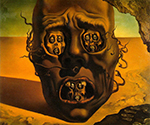
Pride
"even their virtues were being burned away" (654)
Flannery O'Connor's "Revelation" (1964)
Points
for Reflection
EBB: "The Romance of the Swan's Nest" (1844), 173-78
- does Ellie envision an egalitarian love relationship, or one in which one partner wields more influence and sway than the other?
- does Ellie’s diction seem appropriate given her age?
- does Ellie’s vision of knighthood correspond to that provided in Spenser’s The Faerie Queen, Gawain and the Green Knight, or some other Arthurian tale?
- does Ellie imagine her knight’s profession bringing them together, or keeping them apart?
- why might Barrett Browning have chosen a swan’s nest as the special thing Ellie wishes to share with her future lover?
- what tone prevails in this poem? Is it sour, sentimental, or something else?
RB: "The Laboratory: Ancien Régime" (1844), 134-35
- why is it so important that the narrator and her auditor tie tightly the glass masks over their faces (ll.1-4)?
- what is the implied catalyst for the narrator's act of vengeance (ll.5-8)?
- to what alternative location might the narrator have retreated, and why (ll.6-8)?
- of the various ways poison might be delivered to its target, which of those envisioned by the narrator would be the most subtle (ll.15-21)?
- how many targets has the narrator chosen (ll.5-8, 21-24, 27-28)?
- why does the narrator think a single drop of poison too little to do the job right (ll.29-32), and yet not wish too much poison to be used (ll.36-40)?
- what do lines 33-34 and 44 reveal about the nature of the narrator's vengeful desire?
- what payment does the narrator provide her laboratory technician (ll.43-46)?
- what comprises the dust which the narrator wishes removed from her person (l.47)?
- what role does the narrator serve at court (ll.12, 48), and what does this suggest about her value to others?

The Visage of War (1940)
oil on canvas
Salvador Dalí
Dr. Paul Marchbanks
pmarchba@calpoly.edu
horses seem ubiquitous in this film. Does Von Trier assign this motif a single symbolic function?
![]()
